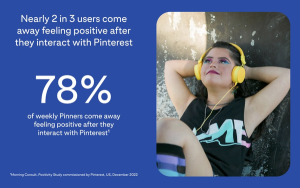The B2B eCommerce industry is booming. At $ 780 billion, the B2B eCommerce market is worth more than double that of the B2C market in the US, where it currently represents 9.3% of all B2B sales. Forrester has predicted that this phenomenon will spread to a global level by 2020, with B2B ecommerce accounting for $ 6.7 trillion in trade worldwide, compared to $ 3.2 trillion for B2C.
As the industry continues to evolve and mature, with more investment pouring in by the day, it has undergone some significant changes. Manufacturers, distributors, and B2B customers are all shaping the B2B eCommerce ecosystem in diverse and interesting ways. In this post, we’re going to look at four key areas that are experiencing growth, and how they’re affecting the broader industry as a whole.
4 Ways the B2B eCommerce Market is Maturing
1. Software is being designed to meet millennial demand
Close to 50% of B2B eCommerce users are millennials, up from 27% in 2013. This has prompted suppliers to invest in eCommerce platforms that meet the unique needs of this demographic and cater to a customer-base that expects 24/7 access to a range of complex features.
Increased competition is also driving this change. The online customer journey for tech-savvy B2B buyers has grown increasingly nuanced. With a plethora of catalogs and online marketplaces at their customers’ fingertips, suppliers are being forced to offer features that meet millennial needs and take into account the differences between B2B eCommerce platforms and their B2C counterparts. It’s likely that 2016 will be the year when the distinctions between B2B and B2C eCommerce really become clear.
2. M-Commerce is taking center stage
Mobile use now outranks desktop for B2B transactions, and the figures are continuing to grow. Companies are responding to this trend by designing mobile-specific interfaces and including features like mobile wallets and push notifications. It’s not uncommon for suppliers to also have their own app, as native mobile Software-as-a-Service (SaaS) solutions are making this much easier to achieve.
One of the challenges with mobile B2B eCommerce portals is providing the extensive content and information (including images, inventory data, promotional materials etc.) about products that buyers need to conduct research. This is why mobile first design is so important––seeking out software vendors who can help companies organize information in a way that’s easy to navigate on a mobile device.
3. Sales and marketing teams are focusing on new online opportunities
On the whole, B2B marketers have been slow to adopt digital marketing methods. Whilst it’s predicted that 46% of B2B sales will be conducted through digital channels and the average conversion rate for B2B eCommerce sites is currently 7.8% compared to 3.0 % for retail sites, a recent Forrester report has suggested that B2B marketers still prefer to invest in traditional marketing channels and that “this fact is hindering B2B marketers from reaching early stage buyers.”
Nonetheless, the same report indicates that marketers and sales reps are starting to shift their focus. By providing a structured self-service process online, companies selling through B2B eCommerce portals have been able to change the direction of their sales and marketing departments.
Alongside seeking out new clients through digital advertising, suppliers are also becoming increasingly aware of the benefits of shifting their current offline client base online. Buyers who have access to a range of channels spend more on average. The fact that repeat purchases can be automated and submitted at any time of the day has been put forward as a leading reason for this. Feature-rich SaaS eCommerce software also provides marketers with the opportunity to design immersive, data-driven customer-centric experiences at a fraction of what it would have cost five or ten years ago.
Marketing teams are also ramping up their digital marketing efforts, now that they have an online destination where they can immediately convert promotions into sales.
4. The ability to integrate is becoming increasingly important
When asked about their top priorities, 60% of B2B executives included backend integration in their answer. Suppliers are seeking to integrate their B2B eCommerce software with a range of backend systems like ERP and accounting software, and B2B eCommerce SaaS vendors are offering off-the-shelf integrations with some accounting systems, as well as custom integrations for more complex ERPs. Seamless cross-communication between systems is becoming more the norm.
SaaS spending will account for 66% of B2B eCommerce spending by 2019, compared with resources expended on in-house systems. The ease and efficiency with which companies of all shapes and sizes can transition to a SaaS solution has made them very attractive and has been a significant force in lowering overall barriers to entry.
Do you have any questions or thoughts about the shifts we’ve outlined? Let us know in the comments below!
Digital & Social Articles on Business 2 Community(76)
Report Post






